What happens to your old mobile phones after you put them in e-waste bins
Each iPhone takes about 5 minutes to dismantle, while an Android phone takes twice the amount of time.
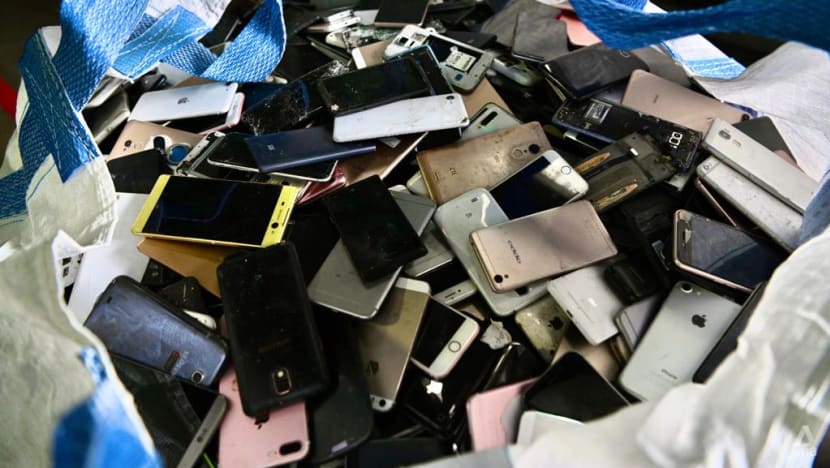
Phones to be recycled collected by ALBA E-waste Smart Recycling. (Photo: CNA/Hanidah Amin)
SINGAPORE: At an electronic waste collection and sorting facility in Tuas, mounds of used mobile phones wait to be recycled.
Among the snazzier smartphones are its bulkier, antennaed monochrome predecessors – the likes of which have not been seen in years. A blue Nokia 6150, launched in 1998, or a lime green Alcatel OT 300 around the same period were among the thousands of used mobile phones collected by ALBA E-waste Smart Recycling.

These phones will be sent to recyclers who then dismantle them into parts that can be processed for reusable material.
CNA visited ALBA and e-waste recycler Virogreen last month to follow the end-of-life process of mobile phones that are deposited into e-waste bins placed islandwide and under the charge of ALBA.
ALBA E-waste Smart Recycling comes under ALBA Group, an international waste management company that was appointed by the National Environment Agency (NEA) as the Producer Responsibility Scheme operator for electrical and e-waste.
As the operator, ALBA will collect regulated e-waste for recycling for five years, until Jun 30, 2026. Regulated e-waste includes information and communication equipment such as computers, laptops, desktop monitors and mobile phones.
The operator told CNA that the number of mobile phones it collects has risen in recent months from when the scheme first started.
From July 2021 to June 2022, ALBA collected an average of 580kg of mobile phones a month. Over the next few months – between July and October – it collected an average of 1,200kg a month.
With the weight of an average phone at around 150g to 200g, this means ALBA now collects 6,000 to 8,000 phones a month.
Related:
ALBA public relations executive June See said that while the company has been collecting more mobile phones, unwanted items such as breast pumps, robotic toys and massagers still get placed in the e-waste recycling bins.
Sometimes, accessories that come with the mobile phone are also placed in bins.
"The public should note to only dispose their mobile phones and remove all packaging waste. For example, the phone box or plastic bags, as those are not e-waste but packaging waste," said Ms See.
ALBA collects any mobile phone, regardless of its model or condition.
Ms See said: "We have seen really, really old models of phones, not just Nokia phones, think back to even those very giant brick-like phones. We actually have collected them, on quite a frequent basis too – so that is pretty surprising to us."
ALBA even collects phones that are damaged, such as those with shattered screens.
"If the glass is shattered, what we would actually recommend the public to do is to put them inside a safe container, for example, into a ziplock bag before dropping it off inside our bin. This is to protect them from being injured," said Ms See.

AFTER THE SORTING AND WEIGHING
After they are collected, mobile phones are handed over to recycler Virogreen, which is located within the same Tuas industrial area.
Up to 90 per cent of a mobile phone can be recycled, Virogreen told CNA.
Once received, the load – whether bags or pallets – containing mobile phones is weighed, said its director of business development Tommy Yeo.
Phones are then brought to a well-lit table at the corner of the facility, where they are manually dissected by workers donning safety glasses and gloves.
Parts such as the phone's screen, plastic cover, battery and mainboard, also known as the printed circuit board, are separated into different boxes. As only a small amount of each part can be obtained from each phone, Virogreen will usually wait to hit a certain weight for each part before sending them to downstream recyclers.
For example, Virogreen collects 25,000kg of printed circuit boards – from both mobile phones and other electronics – before sending them for processing.
During processing, precious metals such as gold, silver, platinum and other more common metals like copper, tin and zinc, can be extracted from the mainboard. The battery contains cadmium, iron, cobalt, nickel, copper and aluminum while the touchscreen can consist of glass and plastic.
After harvesting, these materials can be remade into new products. The 10 per cent of a mobile phone that cannot be recycled will go into the incinerator.
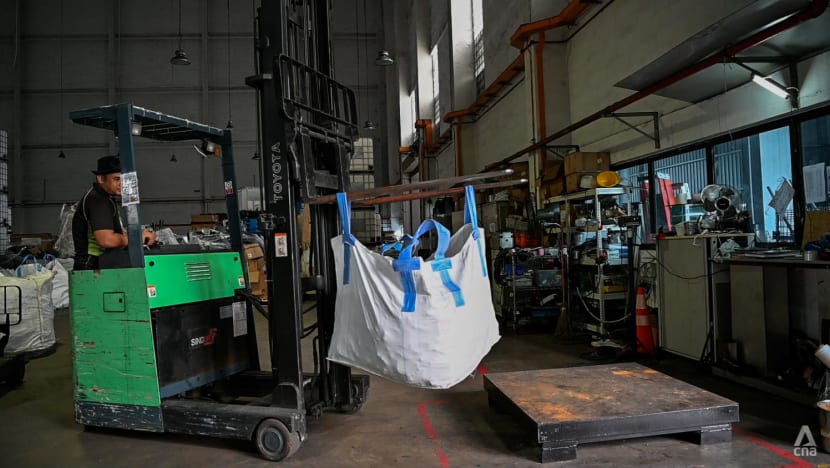
CHALLENGES OF RECYCLING PHONES
One phone takes about five to 10 minutes to dismantle, depending on how it is manufactured, said Mr Yeo as he took CNA on a tour of the facility.
While this might seem like a short duration, the numbers add up with every bag received. Virogreen receives 500kg of mobile phones a month – the equivalent of around 2,500 mobile phones.
Assuming the maximum 10 minutes to take apart a single phone, this means that up to 417 man-hours are needed to dismantle a month's worth of phones.
Dealing with specific phone models also presents its own challenges, said Mr Yeo. Newer models require more time to pry open due to the way they are manufactured.

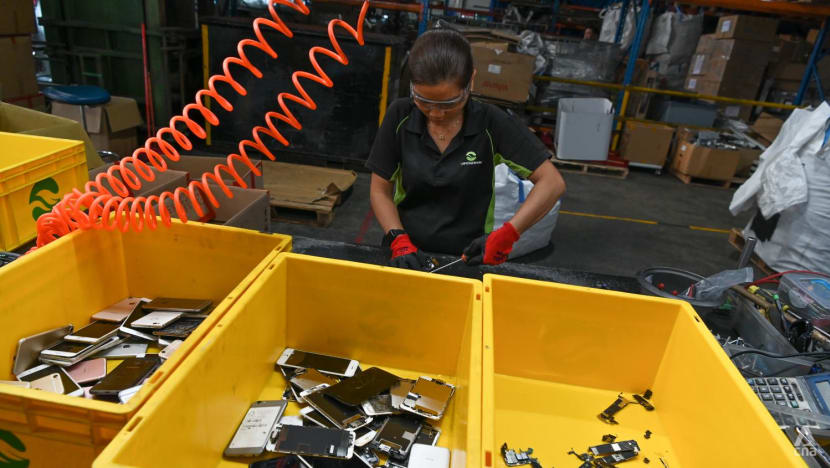
"You compare an iPhone and an Android phone. Android phones they are processed in such a way ... that it's all glued up together. So what happens is that you either pry it (open) the hard way, or you have to soften the contact to pry open the screen and extract the internal parts."
In contrast, an iPhone typically has two tiny screws near the charging point that just need to be unscrewed to pry it open, he added.
This means an iPhone takes about five minutes to dismantle, while an Android takes twice the duration.
Virogreen usually gets older iPhones and Samsung phones for recycling. But it still comes across pre-smartphone models, such as Nokia and Sony Ericsson, which were mainly used for calls and SMS.
Asked how the dismantling process for these older phones went, Mr Yeo said these were "more straightforward".
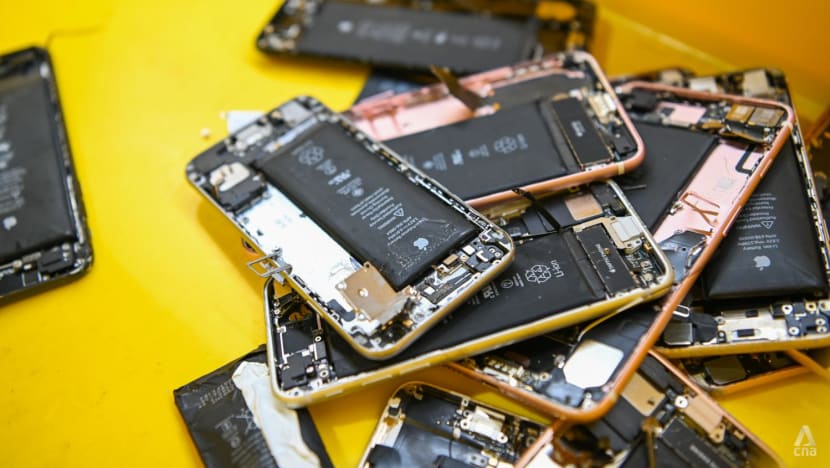
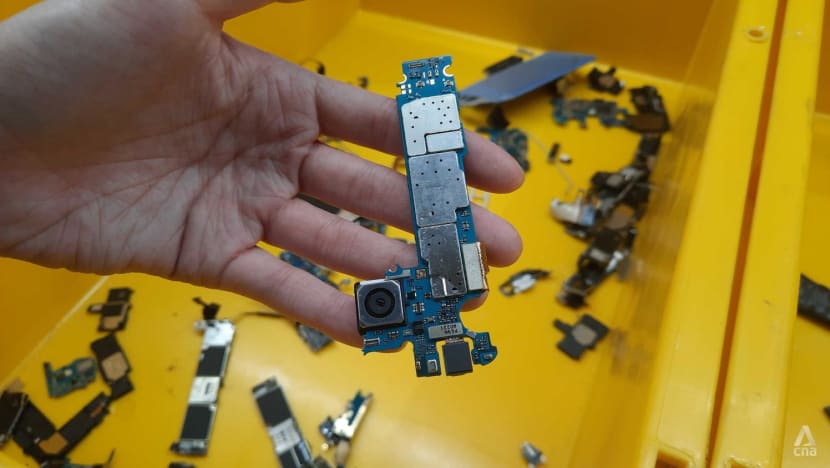
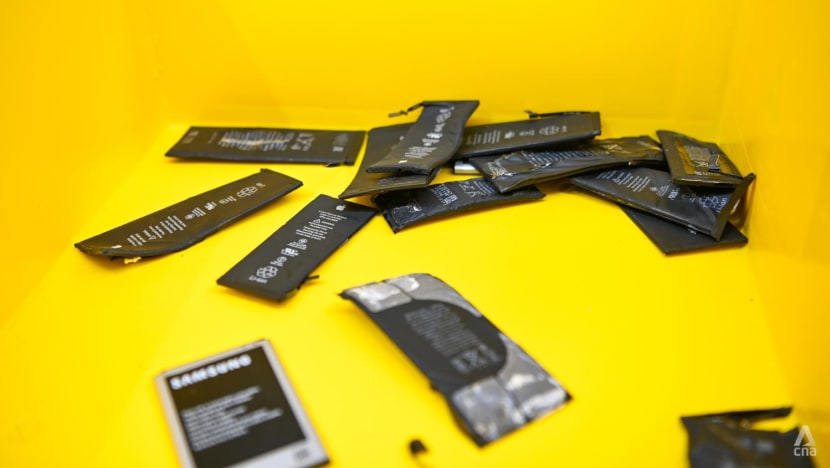
"First of all the batteries are not in-built, they are external. When you remove the rear cover, you can see the battery straight away, you can easily use your fingernail to pry it out.
"The other front part of the cover, you also can just use a thumb to press it down and pry it open (to get) to the main body of the mobile phone."
On the other hand, newer phone models need equipment such as a mini screwdriver or a steel blade to open the device.
Despite the challenges it takes to recycle a mobile phone, simply throwing it into a rubbish bin can lead to undesirable consequences.
"Electronics contain a lot of harmful substances like dioxins, mercury, lead ... that (cause) serious health problems. If electronics are not properly disposed of, they will be disposed into the landfill, and they will gradually release toxic substances into the air, soil, and groundwater," said Mr Yeo.














